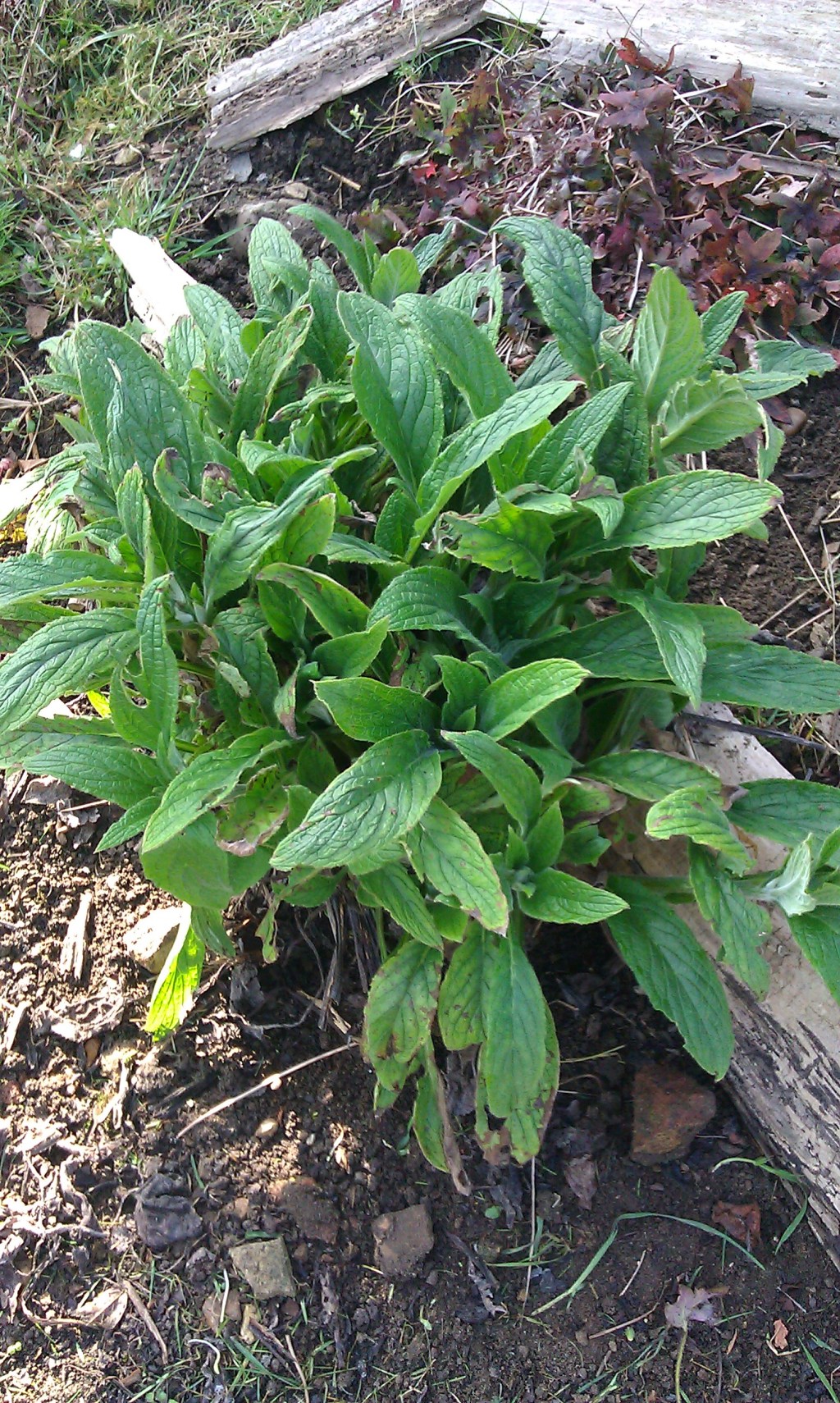In which hopes of borage bite the dust…
Amongst the more virulent members of our garden inhabitants, is a plant, which for the last few years, I have been used to calling borage. It was my mother – usually extremely competent in plant identification, who told me what it was.

So I have been happily regaling friends over the years, with tales of my rampant borage – how it has the wickedest spiky leaves ever, how it absolutely refuses to be tamed and crops up all over the garden, how it’s roots appear to go down forever, as I’ve never managed to pull one out without it breaking at about a foot in length.
Yesterday, being the sort of gardener who appreciates the efforts of others more than enjoys doing it herself, I finally dusted off the gardening gloves and went out to do the spring weeding – the weather having given us an extra day of glorious sunshine and the guilt at not having tidied up outside having reached action point.
As I once again put on my thickest gloves – the ones I use for pruning roses and cutting out brambles – took courage in my hands and grasped the brittle blackened outer borage leaves, that niggling little thought ran through my brain – could it be that this isn’t the benign, delightfully exuberant borage, the flower that graces Pimms throughout the summer? Is it in fact possible that this is a different plant altogether?
I think you can guess the result.
Having spent time researching it properly, it seems that what I have is indeed not borage, but a quite different specimen going by the name of Green Alkanet.
And yes, Green Alkanet has a monstrously long tap-root, vicious spikes that give you a sting something like a combination of a nettle sting and getting fibreglass stuck in your skin. To call it rampant is to understate its conquering intention – nothing less than total garden domination is its objective.

It does have sweet blue flowers and the bees love it – so I’ll let a couple of small patches remain – who am I anyway to think I could stand in its path – but I’m not going to feel half as guilty from now on when I hack at it.
So, having cleared that up, and just as a record of what the extended period of unseasonably hot weather has given us already in the garden…




And a mass of yellow flowers on a shrub that looks like a not terribly spiky holly…

Hope you’re enjoying your own gardening adventures. By the way, how do you grow borage?

Leave a reply to dreaminginstitches Cancel reply